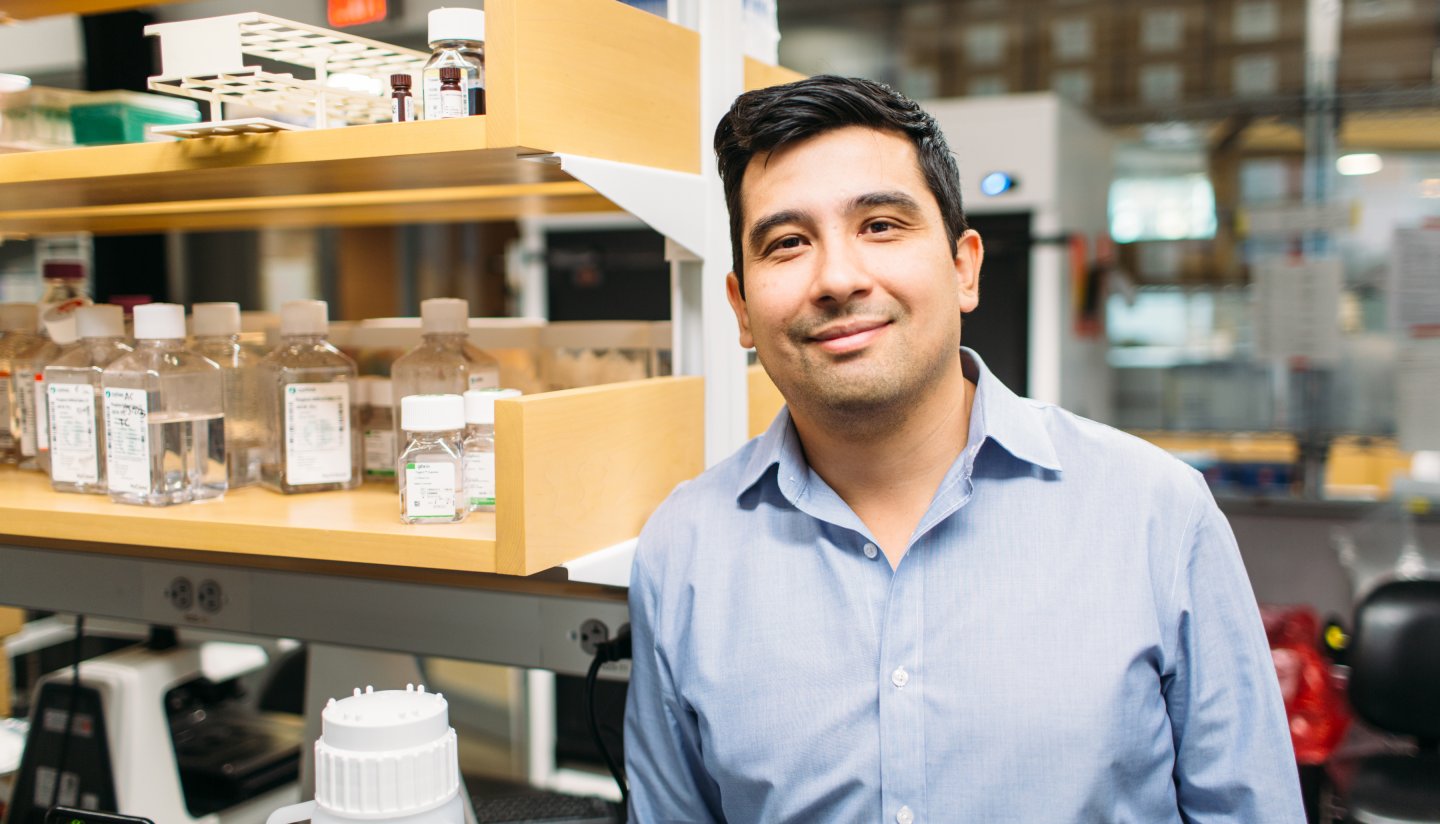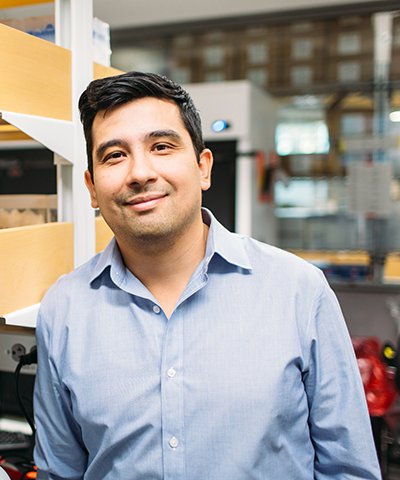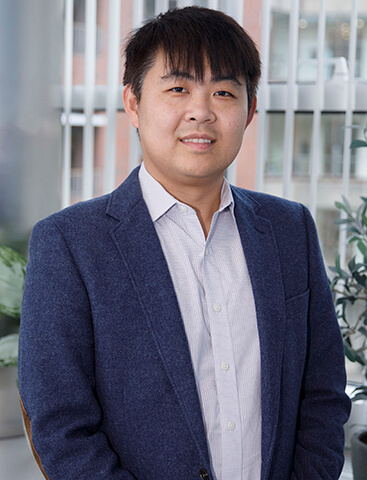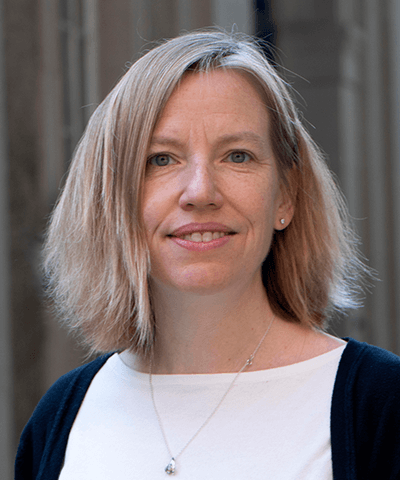
This story has been modified from an article in the Harvard Gazette. Read the original story here.
Today, Jason Buenrostro, an associate professor in the Department of Stem Cell and Regenerative Biology, was named a recipient of the John D. and Catherine T. MacArthur Foundation’s 2023 “genius grant” for developing powerful new technologies that provide detailed views — right down to the single cell — of which genes get turned on and off in various contexts.
Buenrostro, a son of Mexican American immigrants and the first in his family to attend college, was “absolutely floored” to learn of receiving the MacArthur Fellowship. “This is something incredibly special and unique, that I’m incredibly grateful to receive,” he said.
A cellular and molecular biologist, Buenrostro joined the Harvard faculty in 2019 and studies the changing dials within cells that regulate gene expression, a discipline broadly known as epigenetics. While still a graduate student at Stanford University, he worked with colleagues to develop a genome-wide investigation tool called ATAC-seq (pronounced “attack-seek”) that can detect which portions of a cell’s genetic material are “open,” and therefore active, or “closed.” Open and accessible regions of each genome can then be analyzed with a computational tool that reads out an epigenomic profile. This profile contains detailed information about small changes taking place in individual cells in different contexts, including those associated with aging or cancer.
The platform’s impact was evident right from its introduction in 2013, Buenrostro recalled. “We saw people were immediately starting to use it in all sorts of contexts,” ranging from human tissue and human disease biology to cross-species analyses including plants and alligators. “That was an extremely fun thing to see happen,” he said. “We had a method that was pretty broad, pretty generalizable.”
A decade on, countless researchers have used a later iteration of ATAC-seq to answer questions about what epigenetic factors are at play in different cells. Buenrostro and colleagues have since developed single-cell ATAC-seq, a method they use to track changes in gene expression in blood stem cells as they differentiate into other types of cells.
Among the most exciting applications of Buenrostro’s work has been a heightened understanding of the cancer ecosystem. “Tumors are very different from person to person,” Buenrostro explained. “And the cells that surround them can be extraordinarily distinct and unique depending on the exact cancer-causing mutations that exist. So you need methods like this to be able to understand each person’s individual tumor, and to study the diverse ways that normal, healthy cells become cancerous.”
Most recently, Buenrostro and SCRB Department colleague, Assistant Professor Fei Chen, developed new DNA-sequencing methods to understand the spatial locations of genetic mutations. In the context of cancerous tumors, their latest method, called slide-DNA-seq, gives researchers a clearer picture of the pathways of cancer cells and potential treatments.
One thing people forget, Buenrostro said, is that human genomes are incredibly long strings of data — 3 billion base pairs, or rungs of the DNA ladder. Therefore, measurements on whole genomes across millions of individual cells require advancements in computational tools, which make up a large part of Buenrostro’s current work. “The reason we did ATAC-seq in the first place was because we really conceived of this problem of understanding our genetic code as a technological problem,” he said.
Buenrostro received the National Institutes of Health 2019 New Innovator Award, and that same year was named to MIT Technology Review’s “Innovators Under 35” list. He is a member of the Broad Institute and a former junior fellow at Harvard’s Society of Fellows. His B.S. in engineering and biology is from Santa Clara University.
“Jason is an intellectual pioneer whose work is defining fundamental principles of gene regulation and genome structure with unprecedented resolution,” said Amy Wagers, department chair and Forst Family Professor of SCRB. “The discoveries he is making today are writing the textbooks of tomorrow, and I am thrilled to see his exceptional talent and groundbreaking research recognized by this award.”
The MacArthur Fellowship is awarded annually “to talented individuals in a variety of fields who have shown exceptional originality in and dedication to their creative pursuits,” according to the foundation. The 20 fellows comprising this year’s class include three Harvard alumni: author and University of Arizona creative writing professor Manuel Muñoz ’94; aerosol scientist, engineer, and Virginia Tech professor Linsey C. Marr ’96; and Boston University Earth and Environment professor Lucy Hutyra ’07, whose research focuses on carbon cycling.
Fellows receive $800,000 stipends with no restrictions. Buenrostro hopes the award will help maintain his devotion to research while raising two young children with his wife, Sara Prescott, a biology researcher at MIT.


